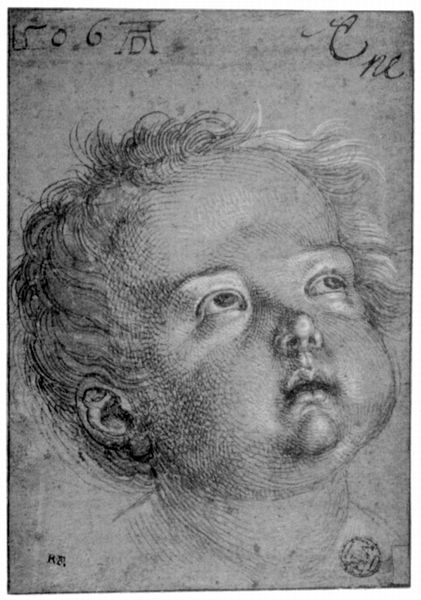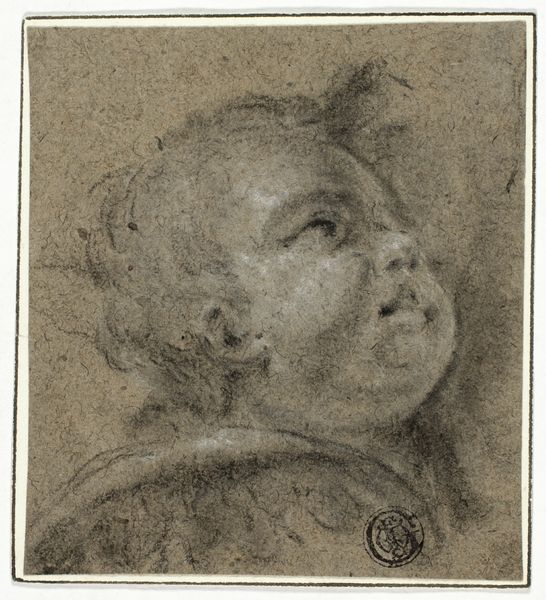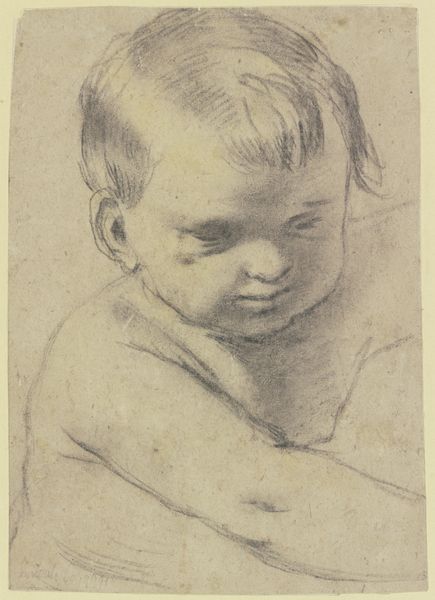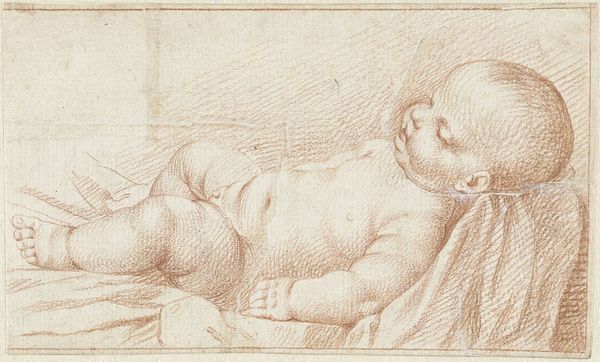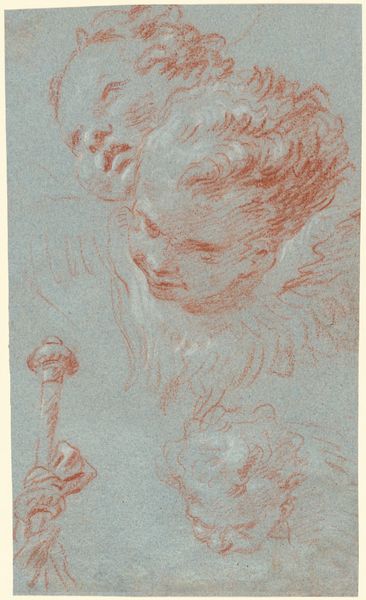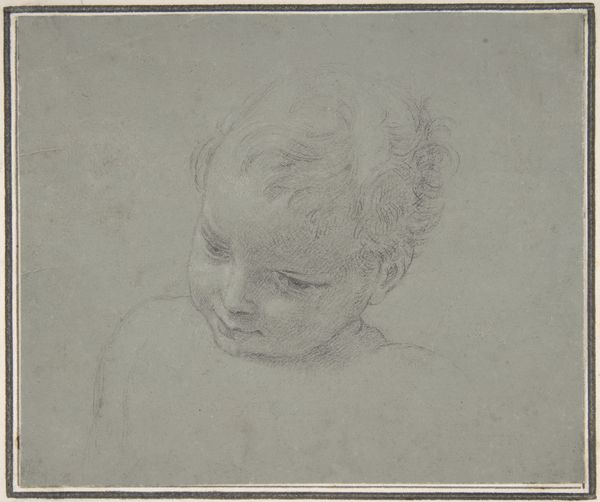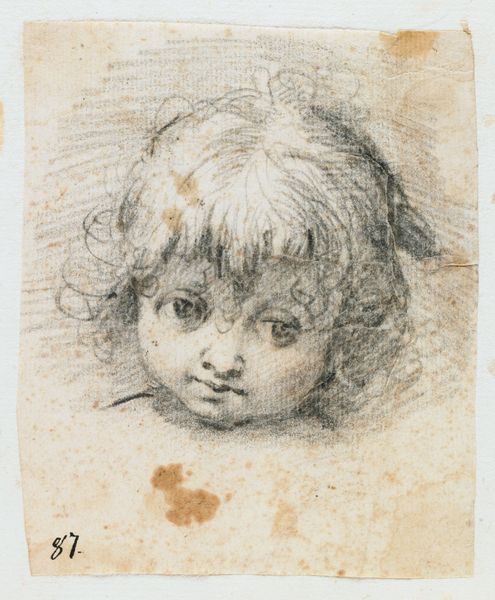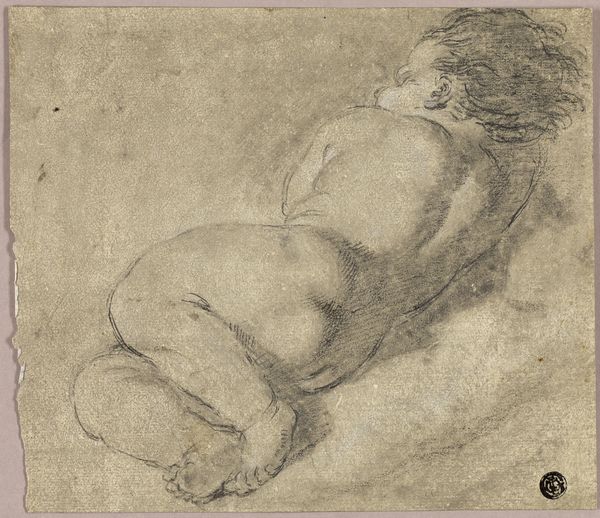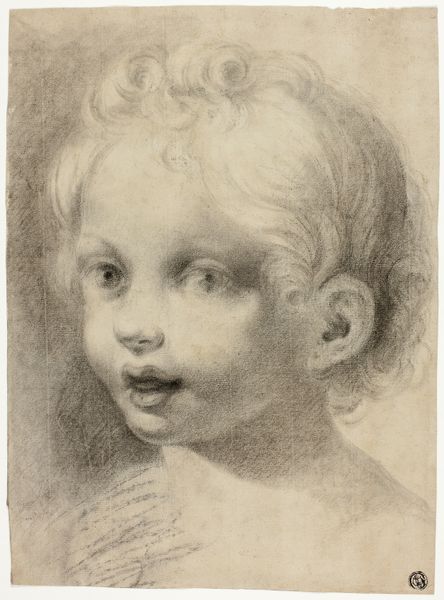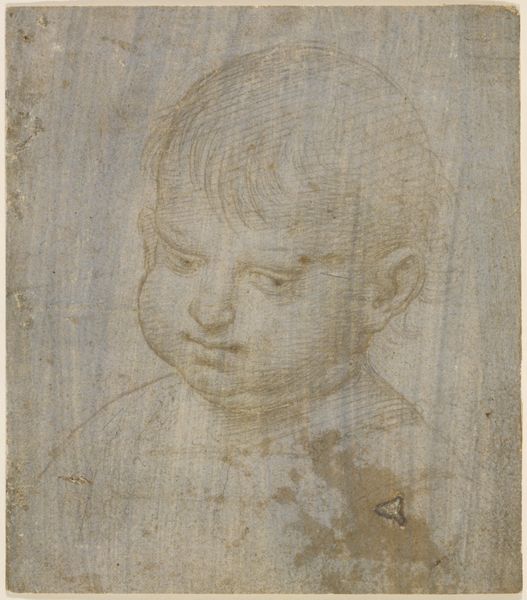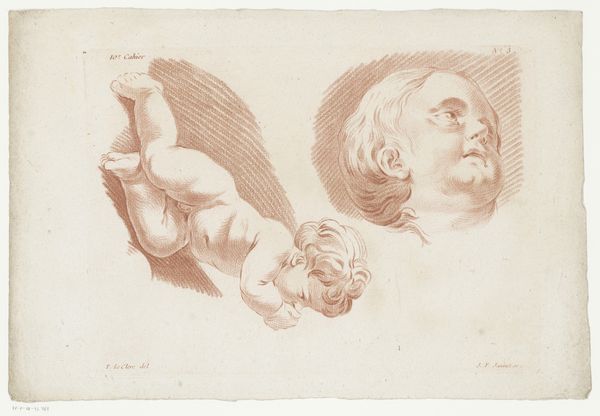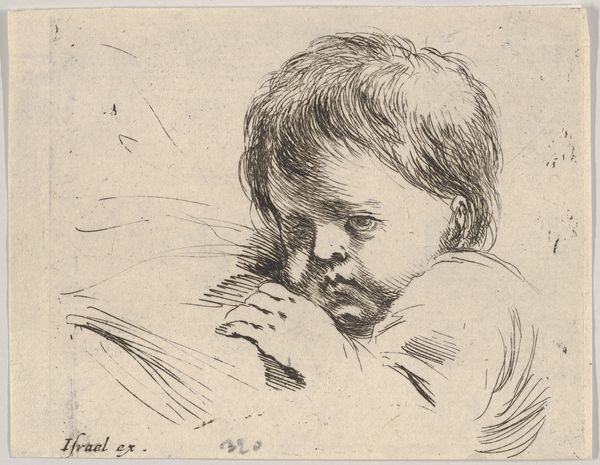
drawing, paper, pencil, charcoal
#
portrait
#
drawing
#
baroque
#
paper
#
pencil drawing
#
pencil
#
portrait drawing
#
charcoal
Dimensions: 80 × 88 mm
Copyright: Public Domain
Editor: We’re looking at "Head of Putto," a 17th-century drawing rendered in pencil and charcoal on paper. The soft, gentle shading gives the cherubic face such a serene quality. What do you see in this piece? Curator: The figure of the "putto" – often depicted as chubby, winged children – isn’t just an aesthetic choice. Emerging strongly in the Renaissance and Baroque periods, they often represent innocence, divine love, and served to legitimize power through association with religious or classical narratives. Where might this specific image fit within these power structures, and perhaps challenge them? Editor: I never considered that! I was only thinking of the art-historical associations. Does the artistic technique factor into that reading? Curator: Absolutely. The use of charcoal and pencil allows for a certain softness, blurring the lines between the divine and the human. Was it perhaps a commentary on the real children who did not live such carefree existences, particularly within class-stratified societies of the era? How might such portraits perpetuate or question ideals of childhood? Editor: So, you're suggesting that what appears to be a simple cherub drawing could have subtle socio-political implications at the time? Curator: Precisely. Art rarely exists in a vacuum. Even idealized forms carry ideological weight, reflecting or resisting prevailing social norms. What do you make of the gaze in this context, too – lowered, seemingly introspective? Does that reinforce established religious norms? Or perhaps begin to subtly question them? Editor: I hadn't thought about the child's lowered gaze as something beyond humility and innocence. Thanks for illuminating how this drawing resonates with larger themes of power and identity! Curator: And thank you for making those historical connections more concrete! Considering how seemingly simple drawings can offer such complexity is one of the most rewarding aspects of studying art.
Comments
No comments
Be the first to comment and join the conversation on the ultimate creative platform.
